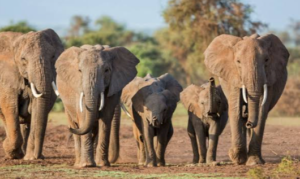
Kenya, home to some of the most iconic wildlife on the planet, has made significant strides in elephant conservation over recent years. With its diverse ecosystems and rich biodiversity, the country plays a crucial role in the global effort to protect these majestic creatures.
Kenya is renowned for its large elephant populations, particularly in national parks and reserves such as Amboseli and Tsavo. These areas provide critical habitats for elephants, which are vital to maintaining the ecological balance. However, the population faced severe threats from poaching and habitat loss over the decades.
In response to the alarming decline in elephant numbers due to illegal poaching for ivory, the Kenyan government, alongside various NGOs, has ramped up anti-poaching efforts. Enhanced surveillance through technology, including drones and GPS tracking, has significantly improved monitoring of elephant movements and the detection of poachers.
Additionally, the establishment of specialized ranger units trained to combat wildlife crime has been pivotal. These rangers not only patrol national parks but also engage local communities, fostering a sense of shared responsibility for wildlife conservation.
Community engagement has proven essential in elephant conservation. Local communities are being incentivized to participate in conservation efforts through programs that offer economic benefits. For example, initiatives that promote ecotourism create jobs and provide financial support to those living near elephant habitats, reducing human-wildlife conflict.
Conservation organizations are also working to educate communities about the ecological importance of elephants and the benefits of preserving their populations. This grassroots approach has resulted in a notable increase in local support for conservation measures.
Preserving and restoring elephant habitats is critical for their survival. Kenya has undertaken various habitat restoration projects aimed at reforesting areas and creating wildlife corridors. These corridors allow elephants to migrate safely between different habitats, promoting genetic diversity and reducing human-wildlife conflict.
Kenya has implemented strong legal frameworks to protect elephants. The country has a strict ban on ivory trade, and those caught poaching face severe penalties. This commitment has led to a decrease in poaching incidents, and recent years have seen some stabilization in elephant populations.
Thanks to these concerted efforts, there are signs of hope. Recent surveys indicate that Kenya’s elephant population is slowly recovering. The success of initiatives such as the Amboseli Elephant Research Project highlights the importance of long-term monitoring and research in understanding elephant behavior and ecology.
Kenya’s commitment to wildlife conservation, particularly for elephants, exemplifies the power of collaboration among governments, NGOs, and local communities. While challenges remain, the positive strides made in protecting these magnificent animals offer a hopeful outlook for their future. Through continued efforts, education, and community involvement, Kenya aims to secure a thriving future for its elephants, ensuring they roam its landscapes for generations to come.